Gardens are fun to have. They can be relaxing and serve as a great way to get outside on nice days. There are many different types of gardens, but they all typically require some type of planting method. This article will go over how you can make garden rows in your yard or garden area so that it is easier for you to plant new flowers, vegetables, or other things!
What Are Garden Rows?
It’s a good idea to implement gardening if you want to enjoy it. The process of laying out the garden row is an important element. There are a number of advantages to row planting, including easier maintenance and the ability to keep everything organized in rows.
With a row planting, you’ll get a tiny garden with an evenly spaced plant. Because there are intervals between the rows, it allows for easy access to the plants and enough space for them to grow. If you must weed your garden, this area called furrow is also important.
There are two ways to make your rows: one is manually, and the other is with a tractor.
You’ll need the following equipment for the manual method of creating a garden row:
- Tiller;
- Shovel;
- Rope;
- Stakes;
- Rake [1];
What Is the Purpose of Garden Rows?
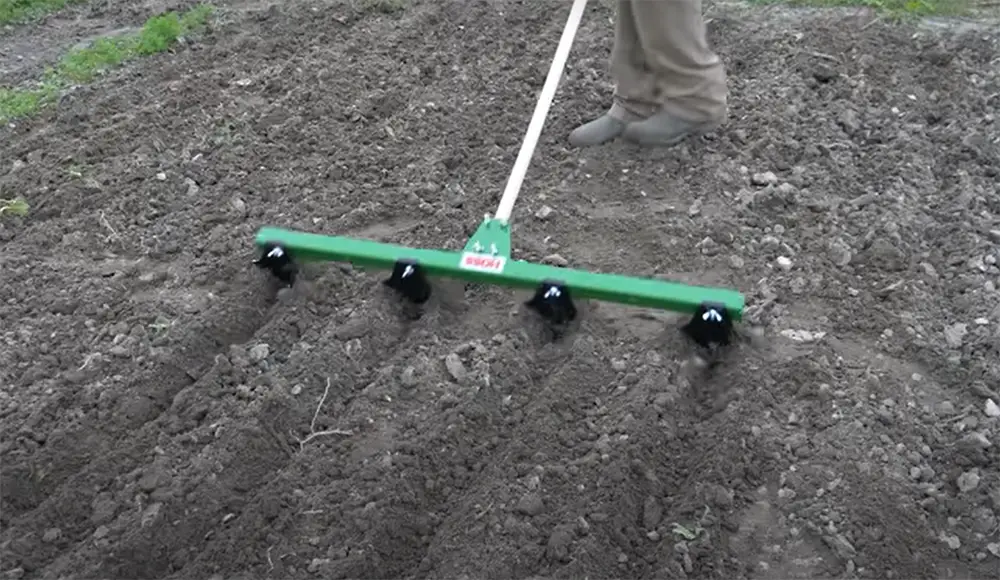
If you want to utilize the soil structure described above for your flat or raised garden bed, there are a number of advantages.
Here are some of the reasons why you should use garden rows in your garden [2]:
- They aid in root development. Plants with a more solid root structure grow in raised garden rows. These fences can also keep your plants’ sophisticated root systems properly spaced, preventing any obstruction to growth;
- They prevent weeds from growing. Mulch or straw may be used to protect your garden rows, which aids in the control of weeds and other invasive plant species in your garden;
- They help your garden stay organized. Raised garden rows, especially when planting a vegetable garden, may assist keep your plants organized. Planting in wide rows allows you to water, weed, and harvest your veggies more easily;
- They make it easier to water your plants. Tilling and sloping the soil for your garden rows helps to create healthy soil, making it simpler to hydrate your plants without overwatering them, which can cause root rot;
- The benefits of raised garden rows include better air circulation and sunshine. Raised garden rows that require a little extra soil above ground level can improve air circulation in your yard while also providing your plants with improved sunlight access;
Types of Row Planting for Vegetable Planting
There are a number of different ways to create your garden rows. Single row planting and extensive row planting are 2 most common types [3]:
1) Single Row Planting
It’s simple and quick to do. It is one of the most popular methods of growing since it involves planting seeds in a line parallel to one another. This technique is best used for vines that grow upright. Trellised peas are an example.
Corn and tomatoes may also be planted in a single row. Corn pollen will be simple to spread, and the tomatoes will produce a huge yield because they will expand greatly on the trunk.
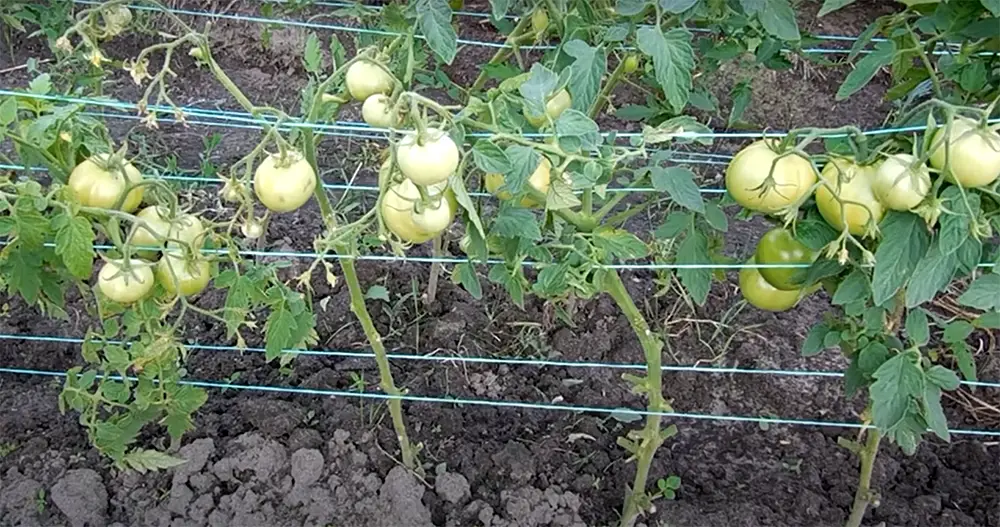
2) Wide Row Planting
For crops and veggies that you harvest over a long period, most gardeners recommend wide-row planting. Green beans are one such example. It’s not ideal for crops you pick in a hurry, like corn. It has the benefit of being space-saving because it allows you to cluster more plants in the same amount of space. Also, since your plants develop densely together, they are less prone to weed infestation.
When plants are planted together in a cluster, they provide shade and aid in the conservation of moisture. This helps to keep the soil cool by reducing evaporation.
Wide row planting may be a good option for farmers and gardeners who live in warmer areas. Planting in a wide row is also a fantastic method to utilize your little yard. This technique increases yield substantially. Furthermore, the product from a wide row planting can be up to five times greater than that of a single row.
When growing in a large row, keep the rows no more than 6 feet wide. You will be able to access the plant’s interior areas when you need them.
Raised Beds or Garden Rows?
Should you establish your garden on top of prepared soil, in raised beds, or in raised garden rows? According to The Old Farmer’s Almanac, raised beds are frames made from a variety of materials that sit on top of the soil [4]. A raised garden bed is great for retaining moisture and keeping pests, weeds, and diseases at bay. It’s a decent choice for yards with low-nutrient soil or very clay-based soils, as well as individuals who don’t have much space to garden in the dirt.
Plants prefer raised beds and raised garden rows because they provide better soil structure than flat-earth gardens. To create a raised row garden bed, add mulch, hay, or compost to the earth until it resembles a hill. That enhanced soil will continue breaking down and feeding the plants over time. Make each row at least 18 inches distant from the next. Use the gap between them as a walking line and don’t fill it with dirt or mulch of any kind.
In the raised bed concept, rows may also be established in the same manner as above. Traditional vegetable rows are tidy and well-organized, allowing gardeners to move freely among the plants. The distance between the rows is utilized as a water channel as well.
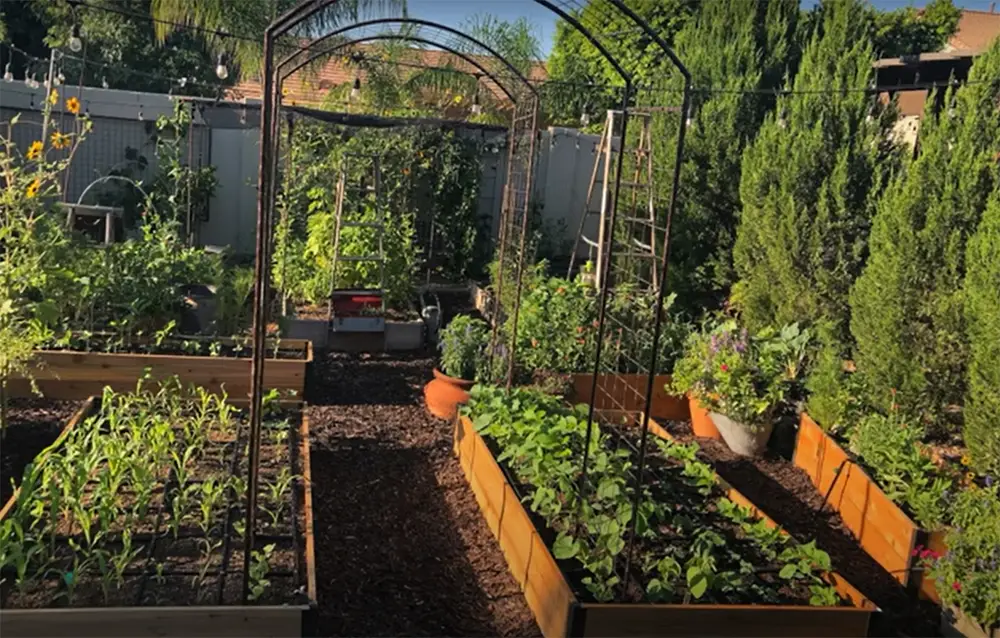
There are several methods to plant veggies in rows – your choice will be determined by the kinds of vegetables you want to cultivate and the amount of land you have.
Raised Garden Rows vs. Flat Garden Rows: Which Is Better?
For plating, a raised garden row is built in a raised bed or container that is filled with soil above ground level. Ground-level planting of garden rows in flatbeds occurs in the present ground area. Here are how the two compare in terms of horticultural criteria:
- Soil drainage. Raised bed gardening has better drainage and soil quality than flat garden rows since the soil will stay loose for longer and excess moisture will have more space to diffuse in the dirt;
- Labor and cost. Raised bed gardening might be time-consuming and expensive, whereas flat garden rows demand less effort;
- Weeds and soil contamination. Because the elevated garden keeps your soil contained, raised garden rows are better for preventing soil contamination and require less weeding;
- Garden space. Raised rows require a significant garden space because they must be able to walk through the rows to access all of their plants. Flat garden rows are an excellent alternative for people who don’t have much space in their home gardens due to limited plots [5];
What are The Benefits of Raised Rows:
Warms Up the Soil Faster
Keeping the raised rows in your garden can assist to keep the dirt warm, which will speed up springtime soil warming.
Watering
The second greatest advantage of the raised rows is that they aid in watering the plants. When you water the plants, the water runs down to the flat ground and the roots must dig a bit deeper to get it. As a result, the plants will not be submerged in water. From where they may obtain water as needed, there will be a pool of water around them.
Best For the High Rainfall Areas
Raised rows are great for crops that need excellent drainage in areas where there is a lot of rainfall. In regions with a lot of rain, raised rows are an appealing alternative since they drain better. Raised beds are perfect for gardens suffering from flooding and require exceptional drainage to keep the water off the plants.

Helps with Weeds
Another advantage of utilizing raised rows in your garden is that they aid in the battle against weeds. Damped raised rows are easy to weed because they provide a clear gap between each row. You’ll be able to quickly identify and remove any weed growth from the raised rows [6].
What are The Benefits of Using Flat Rows:
Less Work Than With Raised Rows
Easy To Replace
Raised rows are more difficult to replace than flat rows, which you may replace at any moment. By replacing the previous crop, you can grow any plant on a flat row with ease. You won’t have to wait long in adverse weather conditions either. Because they may be reconstructed easily, you don’t have to be concerned about the flat rows in bad weather.
No Need to Add Extra Soil
Another benefit of utilizing flat rows in your garden is that they do not require additional soil. Because you needn’t worry about obtaining soil for flat rows, you may use them in the garden without fear. It’s because you can just utilize the existing dirt on your land. If you don’t add any amendments to the soil, it will still give you a decent yield.
Irrigation System
To discuss the irrigation system for raised rows, it must be thoughtfully designed. The elevated rows are significantly higher than the ground surface. However, installing flat rows is rather simple. Because the rows are on the ground surface, only a minimal irrigation system is required.
Economical method
You don’t have to buy extra soil for flat rows. As a result, built flat rows are more cost-effective than raised beds. This money may be spent on any amendments as needed and improve the soil quality. You’ll need money to build raised rows, invest in machinery to create them, and install an adequate irrigation system for them.
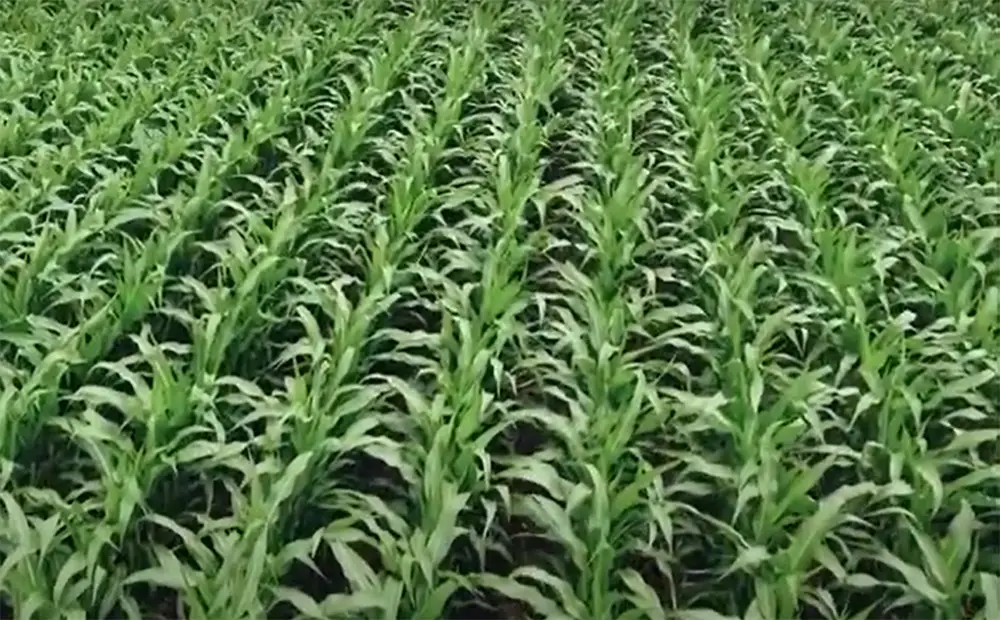
Steps To Making A Straight Garden Row
1) Have a Plan
When it comes to designing your garden, space is crucial. This explains why planning should be a high priority when creating a row for your garden. Here, little precision is required, so get ready for it. Because you must first have an understanding of the complete garden area before dividing it into rows, this is so.
You shouldn’t simply select a row size that appeals to you. To be successful, you need the right garden row spacing. This, however, is dependent on the crops you wish to grow.
Small vegetables can survive on smaller rows (an average of 15 inches between rows).
Larger veggies, on the other hand, require more room (an average of 36 inches between rows).
You also need wider rows if you plan to use a tiller like a rototiller to remove weeds.
2) Prepare the Ground
If you want your garden to flourish, the soil must be healthy. This is critical since the soil provides the nutrients required by the plant. This is why you should prepare the soil before carefully marking out the rows.
3) Mark Your Territory
Put a stake in the ground and space it according to the sort of crop you want to cultivate from one side of the garden. You can use this method to measure out how far along you are till you finish all of the rows that you wish to create. Make a line down each side of the stakes with twine. This will ensure that your rows are straight.
4) Plant the Crops/Vegetables
Make a planting furrow in the dirt with the length of each twine as a plan for rows. If you’re not planting deep-rooted crops, you can make shallow furrows with the tip of your hoe handle. Use a cutlass to dig a trench for deep-rooted plants like beans.
Plant the seeds depending on the plant variety, using the spacing recommended in the first point above. After planting, remove the twine, cover the seeds, and provide enough water [7].

How to Space Vegetable Rows?
Some garden experts advise a 10-foot-by-10-foot garden if you’re creating a new one to ensure adequate spacing for your plants. All types of veggies have unique planting and seasonal needs, so be sure to study this (with information specific to your area) before making a purchase.
Determine the lengths of your gardening paths so that you have enough area to tend to the plants. Then, place stakes at each end of the garden rows to identify them. Tie a string between both ends and make sure it is tight. Using a tape measure and a tiny hoe, judge and label the holes for each plant. Make sure you record what you’re putting where, either with a master document or by using labeled plant stakes.
If you’re using an elevated bed, make rows by hammering nails uniformly around the perimeter of the wood (some gardeners prefer to space them a foot apart). Then, attach strings to these nails and pull them taut. Repeat the process for the nails on the other two sides of your raised bed. You’ll have completed a grid. Squares or rows may be skipped as needed to ensure enough room for your chosen veggies [8].
Comparison of Indicators for Making Garden Rows
Garden rows are a common method used in gardening to organize and optimize the growth of plants. This table compares various indicators for making garden rows, such as the spacing between rows, depth of the row, and the ideal time for planting.
| Indicator | Ideal Measurement |
|---|---|
| Spacing between rows | 2-3 feet |
| Depth of row | 6-8 inches |
| Ideal time for planting | After the last frost |
The spacing between garden rows is important to ensure that plants have enough room to grow and receive adequate sunlight and water. The recommended spacing is usually 2-3 feet, depending on the size of the plants. The depth of the row should be between 6-8 inches, which provides enough space for the roots to grow and access water and nutrients. Finally, the ideal time for planting is after the last frost, which varies depending on the region and climate. By following these indicators, gardeners can ensure healthy plant growth and optimize their harvest.
FAQ
What is the easiest way to make rows in a garden?
Stakes and string are the most popular methods for creating rows in a garden. The simplest method to construct rows in a garden is with stakes and twine. To begin, insert the poles at either end of your garden. After that, connecting the two poles using a piece of rope is necessary. Make sure the rope is tight before proceeding. Finally, use this as a reference to plant your crops in ideal spaced rows.
If you’re building a raised bed, drive nails around the edge of the timber to make rows (some gardeners prefer them a foot apart). Then, using these nails and stretching the strings across, make a grid. You may then skip squares or rows as needed for the greater room.
What is a garden furrow?
A furrow is a long, narrow trench in gardening. These trenches can be used for numerous purposes, including as planting and irrigation systems. Planting in furrows produces straighter rows. Weeding and watering these rows are simple and worry-free since no growing plants are disturbed [9].
How do I make furrows in my garden?
Furrow gardening is rather straightforward:
- To start, growers must choose a well-kept growing area;
- After picking a spot, use garden stakes and twine to make long straight lines;
- Then dig a trench along the length of the string that is approximately 2 inches deep;
- When designing the garden, keep in mind the appropriate distance between each furrow for various crops to be cultivated;
- After completing the trench, sow the seeds and space them as directed on the package;
- Cover the seeds with soil gradually as instructed. Water the new planting slowly until the seeds have germinated;
- Planting in furrows, while not the most space-efficient technique, can make caring for the garden much easier;
- Crops cultivated in straight rows may save time and improve efficiency, especially when it comes to pest management;
What do you put between garden rows?
A newspaper or cardboard spread between the rows of vegetables controls weeds while also providing organic matter to the soil. Modern newspaper inks are soy-based and harmless to utilize in a vegetable garden, however, glossy printing paper should be avoided [10].
What direction should garden rows be planted?
According to most experts, the best way to position garden rows is north to south. This gives the greatest sun exposure and allows for maximum air circulation. When crops are planted east-west, they tend to shade each other [11].
How deep should garden rows be?
The depth of the container should be 12 to 18 inches for big plants like tomatoes or peppers, or for large blossoms. Smaller plants, such as herbs and lettuce, can grow in smaller pots [12].
Do you have to plant vegetables in rows?
Carrots, turnips, radishes, beets thrive in raised rows since the soil is loose there, allowing root crops to grow freely [13].
How far apart should the rows be in a vegetable garden?
The right spacing between your rows in the garden allows for your plants to thrive while also allowing you to work in the space. In most situations, it is reasonable to leave at least 18 inches (up to 36 inches) of the distance between each line of vegetation [14].
What tool do you use to make rows in a garden?
A hoe is the best tool to use to make rows in a garden. You can also use a rototiller, but it is not as precise. To make straight rows, first mark out your garden with string or stakes and then use the hoe to create furrows in the soil. Make sure the furrows are wide enough for your plants and that they are deep enough so that roots will have room to grow. Once you have made the furrows, you can plant your seeds or seedlings. Be sure to water them well!
How do you make a garden row with a shovel?
With a shovel, you can make a garden row in two ways. The first way is to use the shovel to create a furrow in the soil. You would then plant your seeds in the furrow and cover them with soil. The second way is to use the shovel to make raised beds. To do this, you would dig a trench around the perimeter of your desired planting area. Then, you would fill the trench with soil and plant your seeds. Either method will work well for creating garden rows!
Also, make sure to loosen the soil in the furrow with your shovel before planting, as this will help the roots to take hold.
How do farmers get their rows so straight?
There are a couple different ways that farmers make garden rows. One popular method is using a rototiller. A rototiller is a machine that loosens up the soil and helps to create evenly spaced rows. Another common method is simply using a hoe or rake to create furrows in the soil. Once the furrows are created, seeds can be planted in them and then covered with soil.
No matter what method you use, making straight rows is important for ensuring that your plants have enough space to grow properly. Straight rows also make it easier to weed and fertilize your garden later on down the road. So if you’re looking to get neat and tidy garden rows, be sure to put in a little extra effort upfront!
What are the disadvantages of row planting?
When it comes to disadvantages, row planting can be more expensive and time-consuming than other methods. In addition, you’ll need to make sure your rows are perfectly straight – otherwise, your plants won’t grow evenly. Finally, weeds can be a problem in row plantings – they tend to take over if you’re not careful! Then, of course, there’s the issue of pests. If you have a pest problem in your garden, row planting can make it worse because the pests have a straight path to your plants!
Still, despite these disadvantages, row planting is a great way to grow a variety of vegetables in your garden. So if you’re up for the challenge, give it a try! You might just be surprised at how well it works.
What direction should garden rows run?
There’s no definitive answer to this question, as it depends on a number of factors such as the size and shape of your garden, the type of plants you’re growing, and your personal preferences. However, in general, it’s best to orient your rows from north to south. This will ensure that your plants receive an equal amount of sunlight throughout the day.
Another thing to consider is whether you want your rows to be straight or curved. Straight rows are easier to create and maintain, but they can look unnatural in some gardens. Curved rows can add a more organic feel to your space, but they can be more difficult to keep tidy. Ultimately, it’s up to you which route you want to take.
How do I keep grass out of my garden rows?
To keep grass out of your garden rows, you can use a number of different methods. You can till the soil to loosen it up and make it easier to remove weeds. You can also use a hoe or other gardening tool to remove weeds by hand. Finally, you can use mulch or other materials to cover the ground and prevent weed growth.
Another common question is how to make sure your garden rows are straight. There are a few different ways to do this. One way is to use string or twine to mark out where you want your rows to be. Another way is to create raised beds for your plants. This will help keep the soil in place and make it easier to achieve straight rows.
How do farmers keep their soil in place?
There are a few different ways that farmers keep their soil in place. One way is to use a process called contour plowing. Contour plowing is when farmers follow the natural curves of the land to create rows. Another way that farmers keep their soil in place is by using cover crops. Cover crops are plants that are grown between cash crops (the main crop that is being grown to be sold). These plants help hold the soil in place and also provide nutrients for the next crop.
If you’re interested in starting your own garden, you don’t need a huge farm to do it! You can create garden rows right in your backyard.
Mark out where you want your rows to be. If you’re using string or twine, tie it around two stakes that are placed at either end of the row. If you’re not using string, simply use the marker to make a line on the ground.
Use your spade or shovel to dig a trench that is about six inches deep. The trench doesn’t have to be perfectly straight – following the contours of your yard will actually help with drainage.
Place some compost or manure in the bottom of the trench. This will help fertilize your plants. Then, add some soil on top of the compost and begin planting your seeds or seedlings. Water well and keep an eye on your new garden rows!
What to put between garden rows to prevent weeds?
Weeding is a necessary evil when it comes to gardening, but there are ways to minimize the time you spend doing it. One way is to prevent weeds from taking root in the first place by using a weed barrier between your garden rows. Organic mulch, on the other hand, provides the most effective weed control while also assisting to keep strong winds from lifting them.
There are several options for weed barriers, including: black plastic, landscape fabric, and newspapers. All of these work by blocking sunlight and preventing weed seeds from germinating. Simply lay the material down between your garden rows before planting and you’ll have one less thing to worry about come weed-pulling time.
How high should raised rows be?
This is a common question, and there is no definitive answer. The height of your raised rows will depend on the type of plants you are growing. If you are growing taller plants, then you will want to make your raised rows higher so that the plants have enough room to grow. Shorter plants can be grown in lower raised rows.
Another factor to consider when deciding how high to make your raised rows is the amount of space you have in your garden. If you have a large garden, then you can make taller raised rows without issue. However, if space is limited, then you may need to stick with shorter raised rows.
No matter what height you choose for your raised rows, be sure to build them sturdy so that they can support the weight of the plants.
Should you mulch between garden rows?
Yes! Mulching between garden rows is a great way to keep weeds at bay and help your plants retain moisture. You can use anything from straw to leaves to grass clippings as mulch. Just make sure whatever you use is organic so it won’t harm your plants.
Another benefit of mulching between garden rows is that it helps prevent erosion. If you live in an area with heavy rains, mulching will help keep the soil in place and prevent it from washing away.
So, should you mulch between garden rows? The answer is yes! It’s a great way to protect your plants and keep your garden looking neat and tidy.
Useful Video: Garden Rows Without A String Or Hoe
References:
- https://www.ohgardening.com/how-to-make-garden-rows/
- https://www.masterclass.com/articles/garden-rows-guide#what-is-the-purpose-of-garden-rows
- https://www.ohgardening.com/how-to-make-garden-rows
- https://www.almanac.com/gardening-methods-overview
- https://www.masterclass.com/articles/garden-rows-guide#raised-garden-rows-vs-flat-garden-rows-which-is-better
- https://flourishingplants.com/raised-rows-vs-flat-rows-gardening/
- https://www.ohgardening.com/how-to-make-garden-rows
- https://homeguides.sfgate.com/make-rows-vegetable-garden-48352.html
- https://www.gardeningknowhow.com/garden-how-to/info/planting-in-furrows.htm
- https://homeguides.sfgate.com/weed-barrier-use-between-rows-vegetables-98578.html
- https://www.gardeningknowhow.com/edible/vegetables/vgen/vegetable-garden-orientation.htm
- https://www.i4at.org/lib2/howgardn.htm
- https://flourishingplants.com/raised-rows-vs-flat-rows-gardening/
- https://homeguides.sfgate.com/vegetable-planting-guide-plant-row-spacing-57864.html





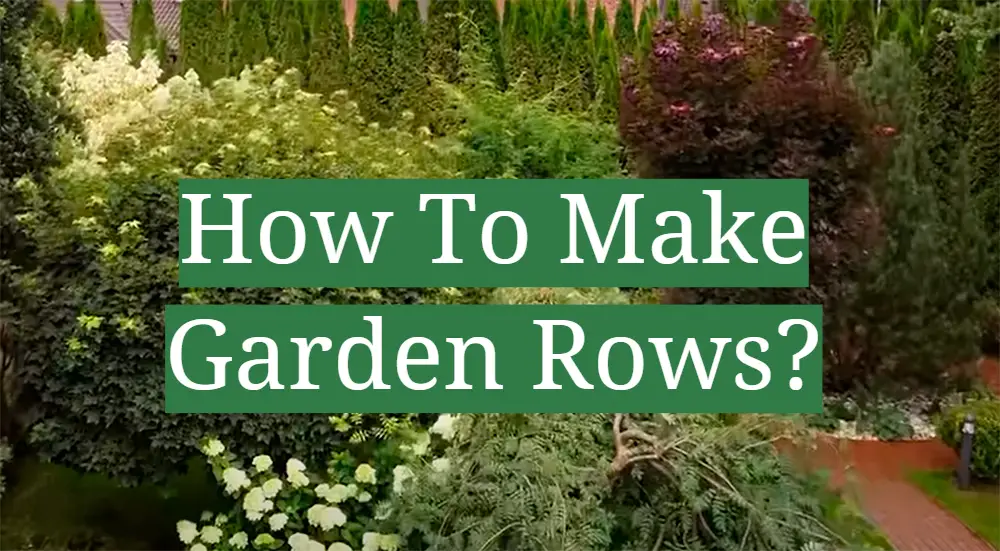




When I was younger, my mom would always explain to me how to make straight garden rows. We would use a wooden stake and a string to measure and make sure everything was straight. Now that I’m older, I do it myself. It’s actually really easy once you get the hang of it.
1. Choose a spot in your garden where you want to plant your rows.
2. Mark off the area with some stakes and string.
3. Dig furrows into the ground using a shovel or hoe. Make them about 6-8 inches deep and 12-16 inches wide.
4. Plant your seeds in the furrows, spacing them evenly apart.
5. Cover the seeds with soil and tamp it down lightly.
6. Water the rows thoroughly and keep them moist until the plants are established.
Now you’re ready to start planting!